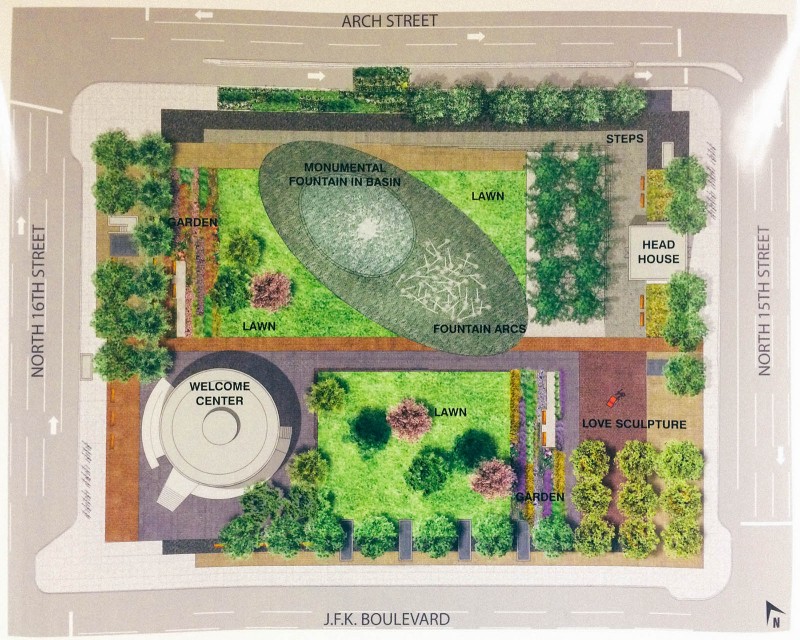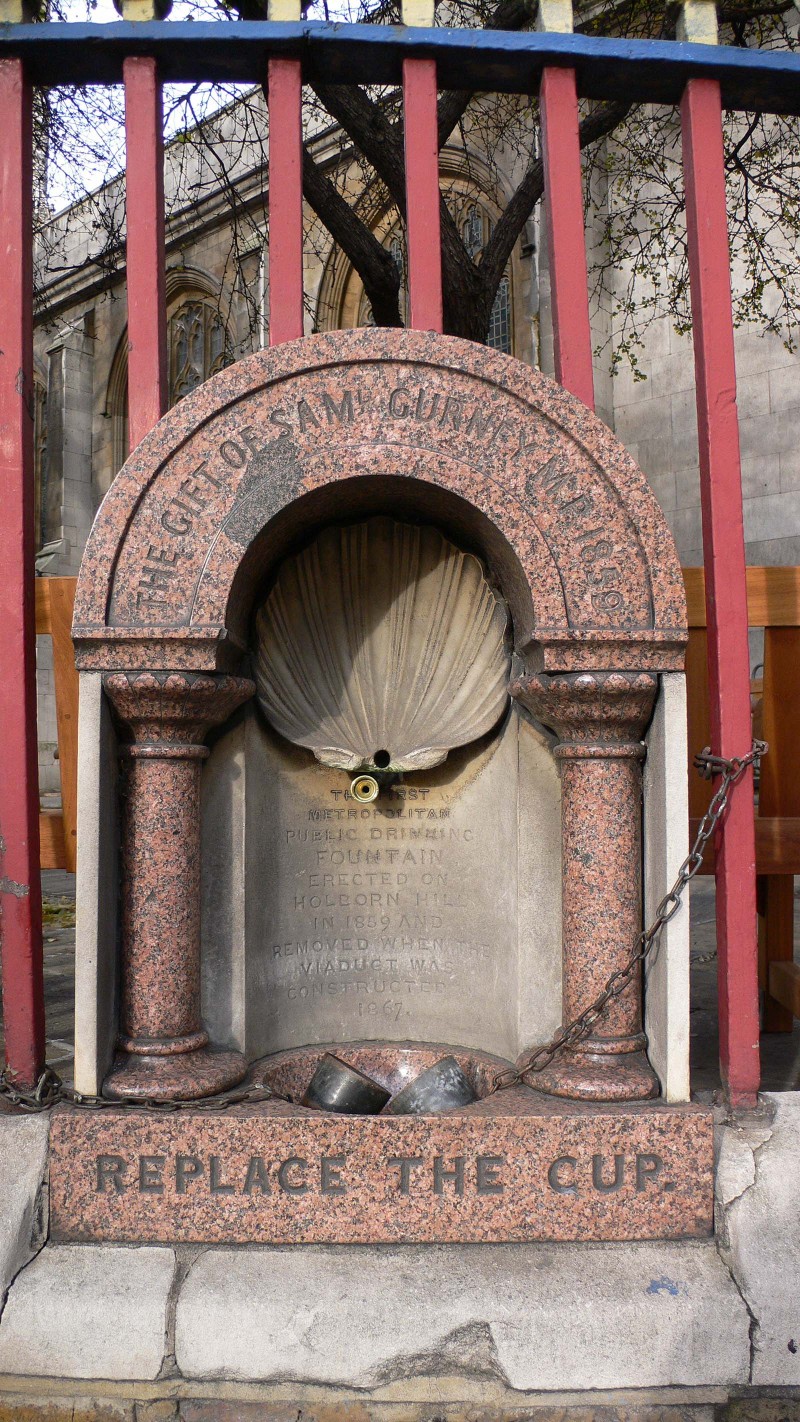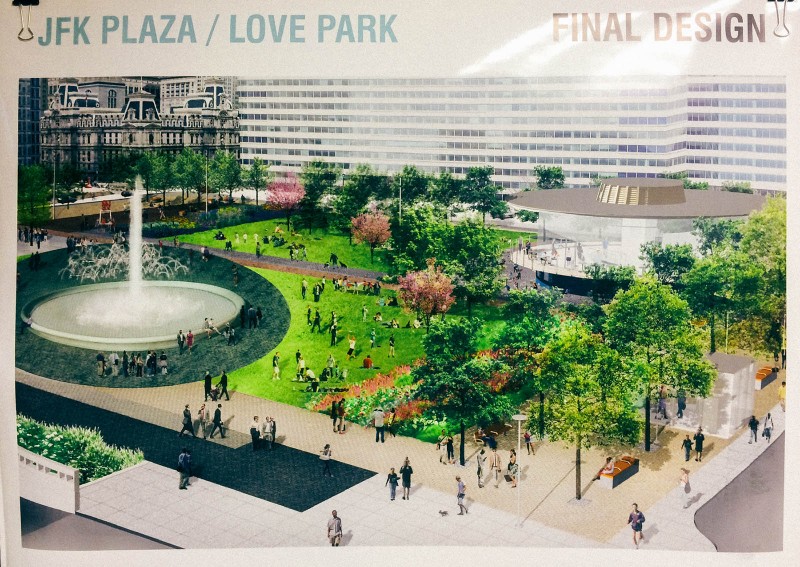On the first Wednesday of November, the Department of Parks & Recreation went before the Philadelphia Art Commission seeking approval for the new design of LOVE Park. The commission approved the design, on the condition that the park include two drinking fountains, as opposed to the Park’s suggested zero. Which begs this question: should the Art Commission, an aesthetic review board, have the power to demand drinking fountains?

So quickly, let’s review the Art Commission. Established in 1911, the Philadelphia Art Commission is the city’s design review board for public projects. The members are appointed by the mayor, and many new construction projects in the city will need this commission’s review to receive a building permit (1). The Art Commission is unique in that it is the one review board that has a non-binding power to make changes mandatory for those seeking approval. The Civic Design Review Committee, a similar board, can only make suggestions, not requirements like the Art Commission (2).
And the way the Art Commission wields this power can become contentious. It’s frustrating for an architect, who has already navigated a collaborative design process, to hear that they must incorporate drinking fountains, and all their infrastructure, into their finished design. The Art Commission’s review can often expand as the board sees fit. What is the Art Commission’s exact power? In this instance, though, the question I’m more interested in is: why are there no water fountains in LOVE Park?
Water as a public right

Today, clean water is so common a commodity that we need to be reminded to drink more of it. Any restroom will have running water, and drinking fountains for humans and dogs are available throughout the city. It’s hard today to understand why thousands of people in London came out to celebrate the opening of the first public drinking fountain on April 21, 1859. We’ve forgotten that clean water was once a scarce commodity. Before this first drinking fountain, residents of London would get their drinking water from the polluted River Thames. If not the river, you would go to the town well, which we now know was the source of cholera outbreaks in the mid-1800s (3). The opening of this drinking fountain, and the right to access clean water in the city, was an event worth celebrating.

In their redesign of LOVE Park, Parks & Rec did not include any drinking fountains. For a park with as international a reputation, there’s great pressure on the agency, the architects, and the budget to deliver a better LOVE Park. And besides, LOVE Park will already include a number of restaurants, which will have bottled water readily available for purchase. Why should the park budget for a resource that will already be available? And why would the park compete with the restaurateurs they want to bring in? The representatives of Parks & Rec were visibly upset by the decision of the Art Commission to demand two drinking fountains into the design–and the budget–of LOVE Park. Since when does the Art Commission have the authority to require drinking fountains?
But the Art Commission’s authority is not at the heart of the conflict here. When we consider the history of clean water, and how important it is as a basic function of everyday life, I agree with the Art Commission that providing access to clean drinking water IS a basic function of the city, and not of a restaurant. So even while questioning the expanding power of the Art Commission, I’m still more inclined to ask: can the city, in as central a place as LOVE Park, really NOT provide access to free, clean water?
(1) More information on the Art Commission
(2) Brey, Jared. “Art Commission Wants Drinking Fountains in LOVE Park.” Plan Philly. 4 Nov. 2015. Web. 3 Dec. 2015.
(3) Mars, Roman, prod. “Episode 199: Fountain Drinks.” “99 Percent Invisible.” Radiotopia. Oakland, CA, 10 Nov. 2015. “99 Percent Invisible.” Web. 3 Dec. 2015. Transcript.
(4) “The Office of Arts, Culture and the Creative Economy Announces a New Public Art Commission by Laura Haddad and Tom Drugan at JFK Plaza / LOVE Park.” “Creative Philadelphia.” City of Philadelphia Office of Arts, Culture and the Creative Economy, 13 Nov. 2015. Web. 3 Dec. 2015.
Dave Kyu reports on art and public space. He is a socially engaged artist, arts administrator, and writer based in Philadelphia, and is currently collecting Campfire Stories from America’s favorite National Parks.









